Shengtai Ju
Shadow Augmentation for Handwashing Action Recognition: from Synthetic to Real Datasets
Oct 04, 2024Abstract:Video analytics systems designed for deployment in outdoor conditions can be vulnerable to many environmental changes, particularly changes in shadow. Existing works have shown that shadow and its introduced distribution shift can cause system performance to degrade sharply. In this paper, we explore mitigation strategies to shadow-induced breakdown points of an action recognition system, using the specific application of handwashing action recognition for improving food safety. Using synthetic data, we explore the optimal shadow attributes to be included when training an action recognition system in order to improve performance under different shadow conditions. Experimental results indicate that heavier and larger shadow is more effective at mitigating the breakdown points. Building upon this observation, we propose a shadow augmentation method to be applied to real-world data. Results demonstrate the effectiveness of the shadow augmentation method for model training and consistency of its effectiveness across different neural network architectures and datasets.
Turkey Behavior Identification System with a GUI Using Deep Learning and Video Analytics
Feb 09, 2021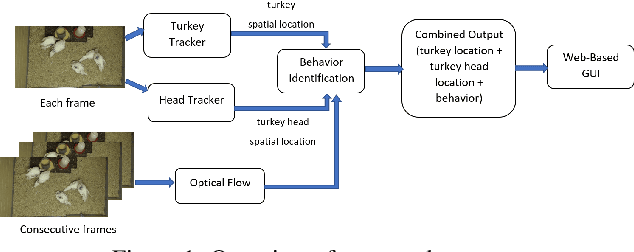
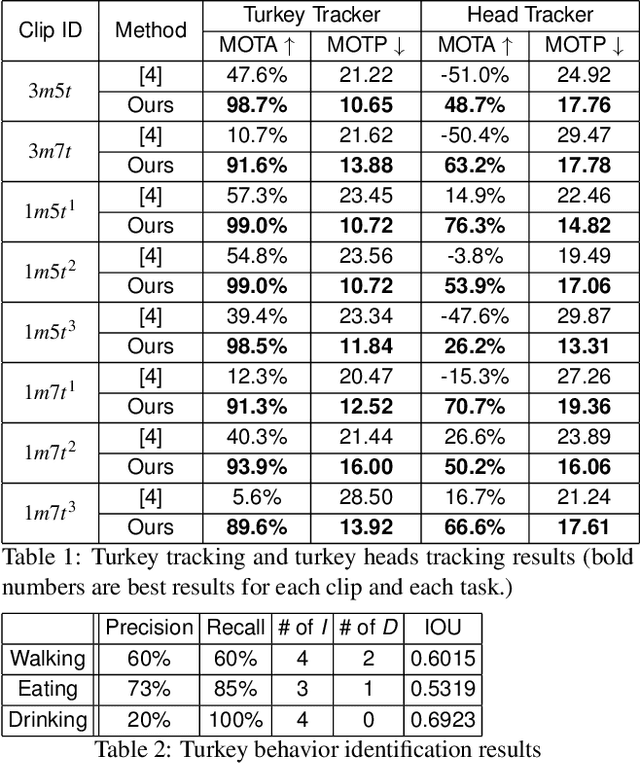
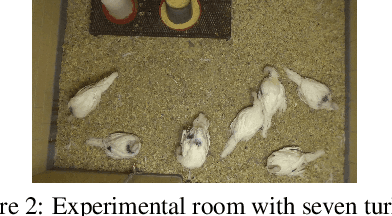
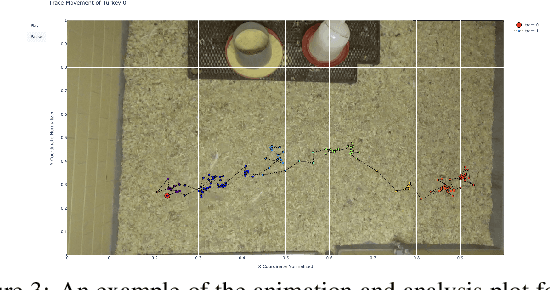
Abstract:In this paper, we propose a video analytics system to identify the behavior of turkeys. Turkey behavior provides evidence to assess turkey welfare, which can be negatively impacted by uncomfortable ambient temperature and various diseases. In particular, healthy and sick turkeys behave differently in terms of the duration and frequency of activities such as eating, drinking, preening, and aggressive interactions. Our system incorporates recent advances in object detection and tracking to automate the process of identifying and analyzing turkey behavior captured by commercial grade cameras. We combine deep-learning and traditional image processing methods to address challenges in this practical agricultural problem. Our system also includes a web-based user interface to create visualization of automated analysis results. Together, we provide an improved tool for turkey researchers to assess turkey welfare without the time-consuming and labor-intensive manual inspection.
Ensemble Wrapper Subsampling for Deep Modulation Classification
May 10, 2020

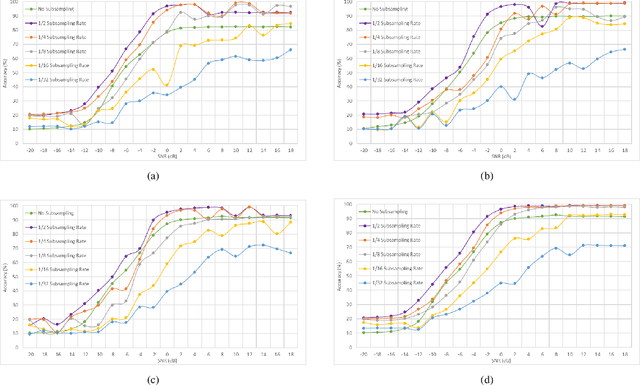
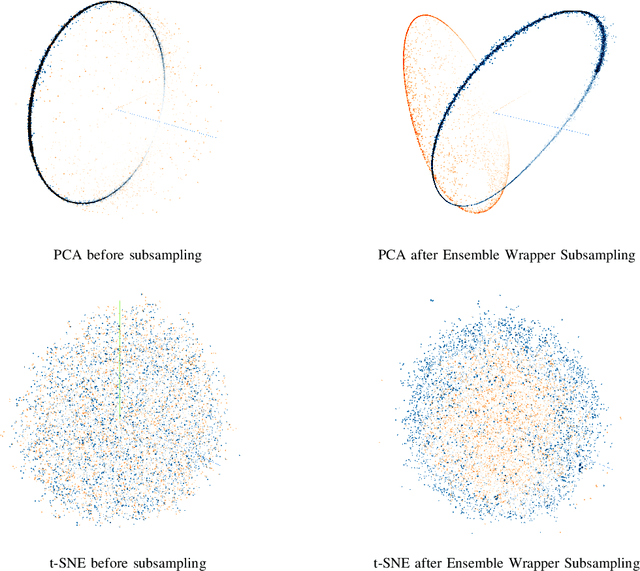
Abstract:Subsampling of received wireless signals is important for relaxing hardware requirements as well as the computational cost of signal processing algorithms that rely on the output samples. We propose a subsampling technique to facilitate the use of deep learning for automatic modulation classification in wireless communication systems. Unlike traditional approaches that rely on pre-designed strategies that are solely based on expert knowledge, the proposed data-driven subsampling strategy employs deep neural network architectures to simulate the effect of removing candidate combinations of samples from each training input vector, in a manner inspired by how wrapper feature selection models work. The subsampled data is then processed by another deep learning classifier that recognizes each of the considered 10 modulation types. We show that the proposed subsampling strategy not only introduces drastic reduction in the classifier training time, but can also improve the classification accuracy to higher levels than those reached before for the considered dataset. An important feature herein is exploiting the transferability property of deep neural networks to avoid retraining the wrapper models and obtain superior performance through an ensemble of wrappers over that possible through solely relying on any of them.
Efficient Training of Deep Classifiers for Wireless Source Identification using Test SNR Estimates
Dec 26, 2019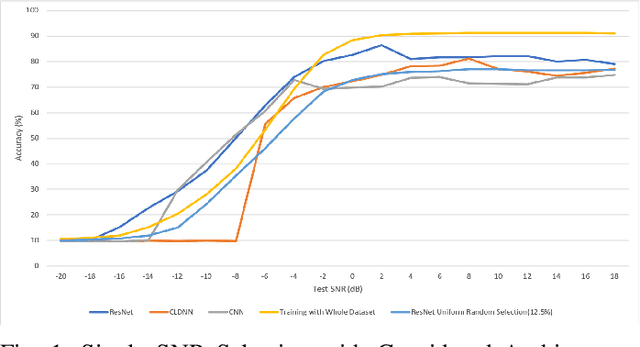
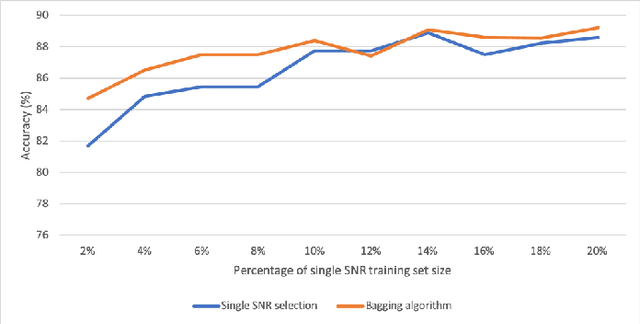
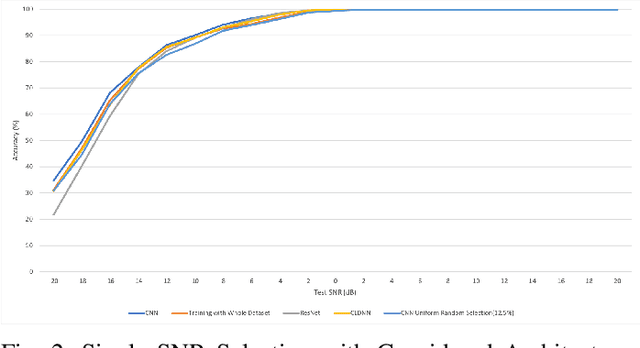

Abstract:We investigate the potential of training time reduction for deep learning algorithms that process received wireless signals, if an accurate test Signal to Noise Ratio (SNR) estimate is available. Our focus is on two tasks that facilitate source identification: 1- Identifying the modulation type, 2- Identifying the wireless technology and channel index in the 2.4 GHZ ISM band. For benchmarking, we rely on a fast growing recent literature on testing deep learning algorithms against two well-known synthetic datasets. We first demonstrate that using training data corresponding only to the test SNR value leads to dramatic reductions in training time - that can reach up to 35x - while incurring a small loss in average test accuracy, as it improves the accuracy for low test SNR values. Further, we show that an erroneous test SNR estimate with a small positive offset is better for training than another having the same error magnitude with a negative offset. Secondly, we introduce a greedy training SNR Boosting algorithm that leads to uniform improvement in test accuracy across all tested SNR values, while using only a small subset of training SNR values at each test SNR. Finally, we discuss, with empirical evidence, the potential of bootstrap aggregating (Bagging) based on training SNR values to improve generalization at low test SNR
Deep Learning for Interference Identification: Band, Training SNR, and Sample Selection
May 16, 2019



Abstract:We study the problem of interference source identification, through the lens of recognizing one of 15 different channels that belong to 3 different wireless technologies: Bluetooth, Zigbee, and WiFi. We employ deep learning algorithms trained on received samples taken from a 10 MHz band in the 2.4 GHz ISM Band. We obtain a classification accuracy of around 89.5% using any of four different deep neural network architectures: CNN, ResNet, CLDNN, and LSTM, which demonstrate the generality of the effectiveness of deep learning at the considered task. Interestingly, our proposed CNN architecture requires approximately 60% of the training time required by the state of the art while achieving slightly larger classification accuracy. We then focus on the CNN architecture and further optimize its training time while incurring minimal loss in classification accuracy using three different approaches: 1- Band Selection, where we only use samples belonging to the lower and uppermost 2 MHz bands, 2- SNR Selection, where we only use training samples belonging to a single SNR value, and 3- Sample Selection, where we try various sub-Nyquist sampling methods to select the subset of samples most relevant to the classification task. Our results confirm the feasibility of fast deep learning for wireless interference identification, by showing that the training time can be reduced by as much as 30x with minimal loss in accuracy.
Fast Deep Learning for Automatic Modulation Classification
Jan 16, 2019
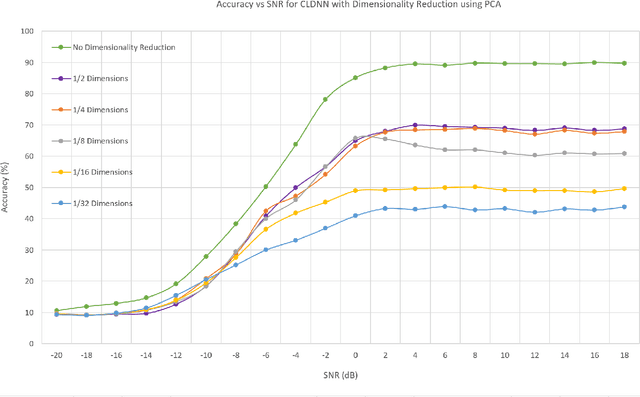
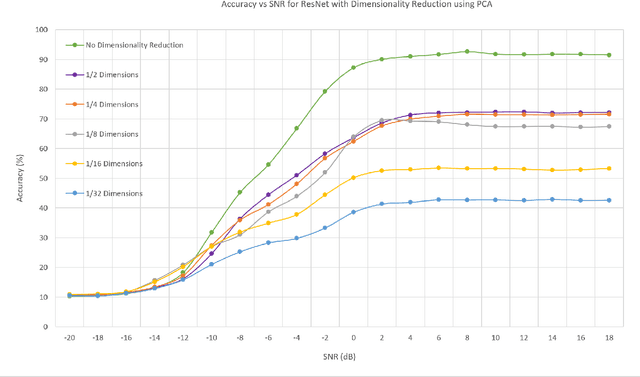
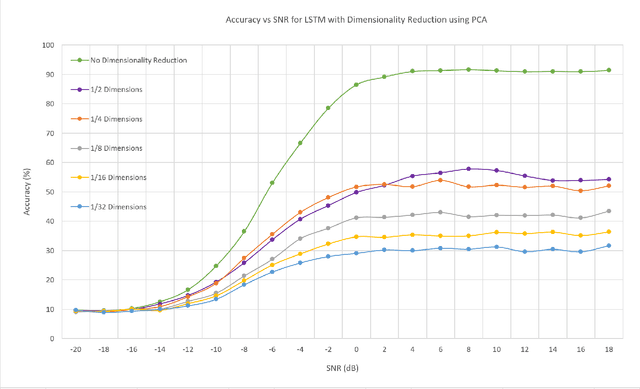
Abstract:In this work, we investigate the feasibility and effectiveness of employing deep learning algorithms for automatic recognition of the modulation type of received wireless communication signals from subsampled data. Recent work considered a GNU radio-based data set that mimics the imperfections in a real wireless channel and uses 10 different modulation types. A Convolutional Neural Network (CNN) architecture was then developed and shown to achieve performance that exceeds that of expert-based approaches. Here, we continue this line of work and investigate deep neural network architectures that deliver high classification accuracy. We identify three architectures - namely, a Convolutional Long Short-term Deep Neural Network (CLDNN), a Long Short-Term Memory neural network (LSTM), and a deep Residual Network (ResNet) - that lead to typical classification accuracy values around 90% at high SNR. We then study algorithms to reduce the training time by minimizing the size of the training data set, while incurring a minimal loss in classification accuracy. To this end, we demonstrate the performance of Principal Component Analysis in significantly reducing the training time, while maintaining good performance at low SNR. We also investigate subsampling techniques that further reduce the training time, and pave the way for online classification at high SNR. Finally, we identify representative SNR values for training each of the candidate architectures, and consequently, realize drastic reductions of the training time, with negligible loss in classification accuracy.
 Add to Chrome
Add to Chrome Add to Firefox
Add to Firefox Add to Edge
Add to Edge